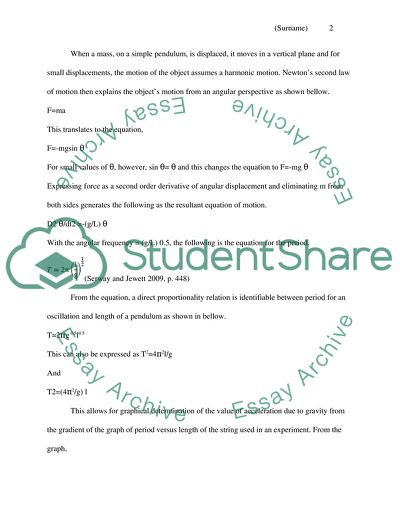Cite this document
(Finding Gravity Using a Simple Pendulum Case Study Example | Topics and Well Written Essays - 1500 words, n.d.)
Finding Gravity Using a Simple Pendulum Case Study Example | Topics and Well Written Essays - 1500 words. https://studentshare.org/physics/1808567-finding-gravity-using-a-simple-pendulum
Finding Gravity Using a Simple Pendulum Case Study Example | Topics and Well Written Essays - 1500 words. https://studentshare.org/physics/1808567-finding-gravity-using-a-simple-pendulum
(Finding Gravity Using a Simple Pendulum Case Study Example | Topics and Well Written Essays - 1500 Words)
Finding Gravity Using a Simple Pendulum Case Study Example | Topics and Well Written Essays - 1500 Words. https://studentshare.org/physics/1808567-finding-gravity-using-a-simple-pendulum.
Finding Gravity Using a Simple Pendulum Case Study Example | Topics and Well Written Essays - 1500 Words. https://studentshare.org/physics/1808567-finding-gravity-using-a-simple-pendulum.
“Finding Gravity Using a Simple Pendulum Case Study Example | Topics and Well Written Essays - 1500 Words”. https://studentshare.org/physics/1808567-finding-gravity-using-a-simple-pendulum.


